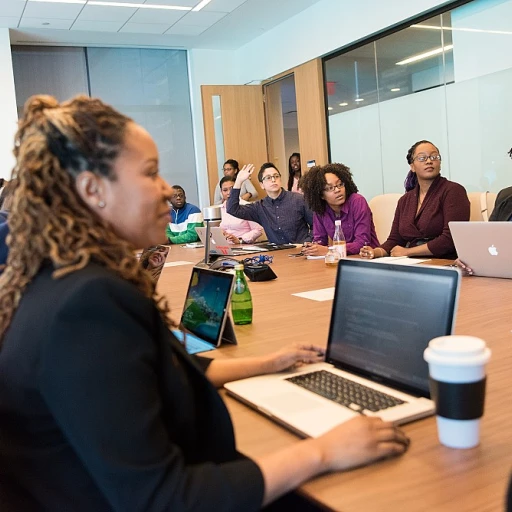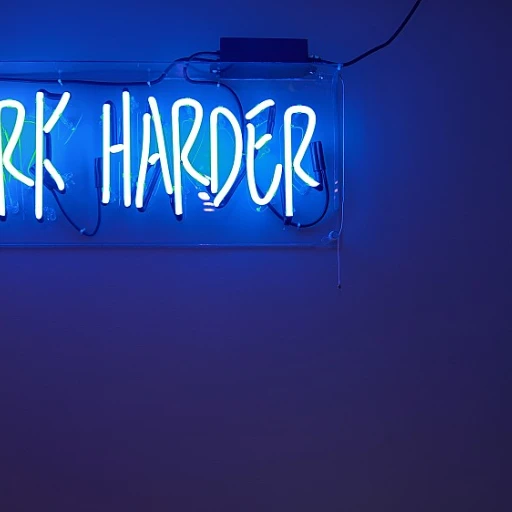
Understanding the Role of a Chief Human Resources Officer
Navigating the Complex Role
The role of a Chief Human Resources Officer (CHRO) is crucial in driving an organization's success and performance. It extends beyond traditional human resources management, transforming into a strategic partner responsible for influencing company culture, employee development, and organizational growth. A CHRO is pivotal in shaping high-performing teams by implementing effective performance management and communication strategies.
CHROs are tasked with aligning the human resources function with the company's strategic goals. This involves understanding the organization's long-term vision and ensuring that talent management practices support these objectives. Essential to this role is the ability to foster a performance culture where employees feel valued and motivated. Through performance reviews and feedback, CHROs help in the continuous growth and development of both individuals and teams.
Driving Employee Engagement and Development
Employee engagement is another significant aspect that a CHRO must address. Engaged employees are more likely to contribute to a high-performance team and drive organizational success. This requires implementing strategies that promote open communication, team building, and employee development. The strategic HR leadership plays a critical role in crafting a work environment conducive to collaboration and innovation.
Continuous learning and professional development opportunities ensure that employees remain competitive in their roles while fostering a culture of growth. The CHRO must advocate for programs that support talent development, enabling the organization to maintain a competitive edge in the industry.
Establishing a High-Performance Workforce
A successful CHRO effectively leverages management strategies to maximize an organization's human capital. By focusing on strategic workforce planning, the CHRO ensures that the organization is well-equipped to adapt to changing market demands. This involves not only hiring and retaining top talent but also developing high-performing teams capable of achieving the company's objectives.
Ultimately, the CHRO must blend strategic vision with practical HR management processes, creating an environment where employees can thrive, and the organization can succeed. Their leadership is instrumental in building a resilient company culture, essential for navigating future challenges.
Implementing High-Impact Talent Management
A Comprehensive Approach to Talent Development
Implementing high-impact talent management begins with a clear focus on the development and growth of employees within the organization. By cultivating an effective performance culture, companies can directly influence their long-term success. This involves not only identifying and nurturing high-potential talent but also providing continuous learning opportunities that align with the company's strategic goals.
An integral part of this process is fostering high-quality employee engagement. When employees feel valued and understand their role in the team's success, they are more inspired to contribute actively. Encouraging open communication and regular feedback sessions helps in establishing a transparent management process, which is crucial for both individual and organizational growth.
Elevating Performance through Strategic Reviews
Performance reviews are an essential component of high-impact talent management strategies. They should not be viewed merely as a formal assessment tool but as an opportunity to enhance professional development and align employee and company goals. When conducted effectively, performance reviews offer insights that can elevate the performance culture and build more cohesive, performing teams.
A well-structured performance management strategy includes setting attainable targets, understanding team dynamics, and recognizing team members’ strengths and areas for improvement. This fosters a sense of commitment and ownership among employees, leading to more cohesive and high-performing teams.
For further insights on elevating talent within specific industries, consider exploring the detailed perspectives on enhancing talent in the pharmaceutical industry. These strategies can often be adapted to various business contexts, further illustrating the dynamic nature of effective talent management.
Leveraging Technology for HR Efficiency
Enhancing HR Performance through Technological Integration
In today's rapidly evolving work landscape, leveraging technology for HR efficiency is crucial in achieving organizational success. Chief Human Resources Officers must embrace innovative solutions to optimize performance management and team collaboration.- Streamlining Performance Reviews: Implementing automated systems for performance reviews not only saves time but ensures a uniform evaluation standard across the organization. By providing real-time feedback, employees feel more engaged and motivated to achieve their professional development goals.
- Facilitating Continuous Learning: An effective performance culture promotes continuous learning and growth. Online platforms and e-learning tools offer accessible training resources, fostering employee engagement and talent development. This approach builds a high-performing culture where team members are empowered to enhance their skills in a dynamic work environment.
- Boosting Open Communication: Incorporating digital communication channels within the management process encourages open dialogue between leaders and employees, breaking down hierarchical barriers. This fosters a resilient organizational culture, ultimately building trust and transparency.
- Interactive Team Building: Utilizing collaboration software enhances team-building efforts, allowing for seamless coordination among diverse teams working remotely or across different geographic locations. It creates a synergy that aligns with the company culture and drives the team towards shared objectives.
- Data-Driven Decision Making: Leveraging HR analytics offers valuable insights into employee performance and talent management strategies. Data-driven decisions support long-term organizational goals by identifying high-potential employees and tailoring individual development plans.
Building a Resilient Organizational Culture
Fostering a Performance-Driven Work Environment
To effectively build a resilient organizational culture, the Chief Human Resources Officer (CHRO) must focus on creating a performance-driven work environment. This involves more than simply reinforcing KPIs; it's about nurturing an atmosphere where employees feel valued, supported, and motivated to achieve personal and organizational breakthroughs.
One of the primary strategies is to establish open communication channels that encourage team members to share their ideas and feedback. Employee engagement can be significantly enhanced by promoting transparency and fostering a culture of continuous feedback. This helps employees feel more connected and invested in the company’s goals.
Developing High-Performing Teams
Professional development is crucial to cultivating high-performing teams. Offering opportunities for talent development not only improves individual skills but also boosts team morale. A structured management process that includes consistent performance reviews can help leaders identify areas for improvement and celebrate successes, thereby reinforcing a high-performance culture.
Also important is the practice of team-building exercises designed to enhance effective communication and collaboration among employees. When teams understand how to work efficiently together, they are more likely to align with the company culture and contribute to its success.
Encouraging a Culture of Continuous Learning
A vital element of building resilience within an organization involves inspiring continuous learning among employees. Encouraging professional growth not only enhances the skills of team members but also contributes to long-term organizational success. By prioritizing learning and development, leaders ensure that their teams remain agile and prepared to face the complexities of today's business world.
Ultimately, creating a performance management strategy that balances employee aspirations with organizational objectives is essential for sustainable growth. As a CHRO, steering your company culture toward these standards will cultivate an environment where both the organization and its employees can thrive.
Strategic Workforce Planning
Crafting a Long-Term Workforce Blueprint
Achieving a successful strategic workforce plan requires a profound understanding of both current and future organizational needs. As organizations continuously evolve, so should the strategies that govern their workforce. Aligning your workforce goals with the company’s overarching vision is fundamental for sustained growth and success.
First, ensure your strategy focuses on fostering performance management systems that drive employee engagement and motivation. Prioritizing continuous learning within your company culture can transform a team of employees into a high-performing unit. Consider techniques that are centered around feedback and employee development, allowing each team member to realize their full potential.
- Effective Communication: Transparent and open communication should be a staple in your strategy. It ensures that all employees, from management to entry-level staff, are on the same page and understand the organization’s long-term goals.
- High Performance Teams: Cultivating high performance teams involves careful talent management and strategic team building. Identify key players within the organization and utilize their strengths in roles that challenge and grow these talents consistently.
- Performance Culture: Establish a performance-oriented culture that rewards innovative ideas and exceptional contributions. Encourage professional development by providing resources and support for employees to advance their careers.
In conclusion, the key to a winning strategic workforce plan is adaptability and foresight. Keep an eye on industry trends, maintain open channels of communication, and hold regular performance reviews to ensure your team is aligned with the company’s objectives. This approach not only enhances individual growth but also prepares the organization for unforeseen challenges, ensuring long-term resilience and prosperity.












